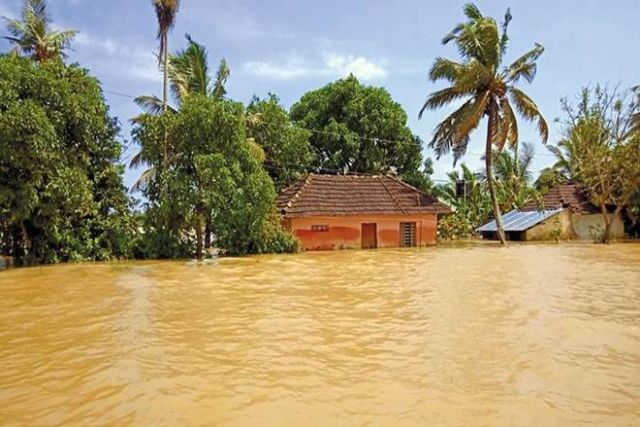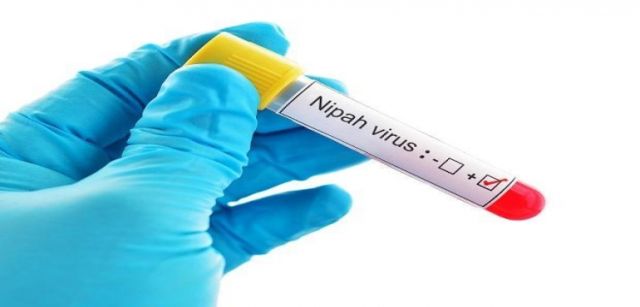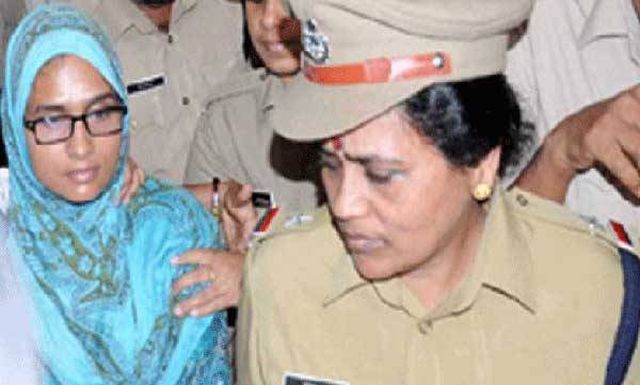
Building a new Kerala: Window of opportunity for government
When one of the rulers of Travancore, now a part of the southern Indian state of Kerala, handed over the reins of his territory to Lord Padmanabha, the presiding deity of Thiruvananthapuram, and undertook to take care of it in the Lords name, his idea was that he had assumed even greater responsibility as he was answerable to the Almighty.
But the characterisation of Kerala as “God’s own country”, though made as a tribute to its beauty and tranquility, has an unfortunate connotation that the welfare of the state is in the hands of God and the people have been absolved of responsibility of safeguarding its future. “God alone knows”, “God save his own country” and such comments are common at times of crises. No wonder, therefore, that the devastating floods of August have been attributed by some to the ire of gods.
Many believe stoically that the recent debate regarding certain rituals and practices in the temples has displeased the gods. But the most important consequence of the current crisis is the realisation that the responsibility of taking care of the safety and security rests squarely on the people themselves.
The figures of deaths and displacement of people and loss of infrastructure may not be alarming by international standards, but for a small state like Kerala, more than 350 deaths, 800,000 people displaced, 4000 relief camps and 10,000 km of roads damaged and its global award winning airport damaged are beyond its capacity to endure and to overcome.
It took the international media and the United Nations a whole week to realise that this is a tragedy of humongous proportions. National and international assistance is pouring in rather belatedly after the state was stretched beyond its capacity to save lives. It took time even for the Government of India to realise the extent of the tragedy.
It goes to the credit of the state government voluntary organisations that no time was lost in launching rescue and relief efforts with wide participation of the people. Normally a state torn by political, religious and caste strife, where violence is not uncommon, Kerala rose to the occasion, leaving aside the differences and without engaging in the blame game.
The stunning effect of the tragedy metamorphosed the community. Kerala’s addiction to social media, which was considered an evil, played a major role in rescue operations. Of course, some depraved minds used the social media either to spread false information or to discredit the relief effort.
“Accidents are inevitable, but disasters are not” is the repeated refrain of Muralee Thummarukudy, the chief of the disaster management unit of the UN in Geneva, who has come to be known as “Nostradamus of Kerala” because of the dire predictions he had made about such a disaster after he saw what had happened in Uttarakhand.
But it will take a long time to assess what could have been done and what should be done in the future. The only disaster of a similar nature the Kerala remembers rather vaguely is the flood of 1924. The lessons learnt from that experience have been lost after a century.
But what could have been done was to locate the water levels recorded in certain places and avoided building homes and other facilities above those levels or moved away from those areas altogether. This was obviously not done because of a feeling that history would not be repeated.
Then there was the Madhav Gadgil report on the Western Ghats, which had suggested several measures to preserve the ecology of the region. Gadgil himself agrees that there was an intense rainfall which has caused this, but he goes on to say that “I am quite convinced that the last several years’ developments in the state have materially compromised its ability to deal with events like this and greatly increased the magnitude of the suffering that we are seeing today. Had proper steps been taken, the scale of the disaster would have been nowhere near what it is today.”
In its report submitted in 2011, the Gadgil panel had suggested measures for the preservation of the natural environment of the ecologically fragile Western Ghats region. The report had recommended that the entire Western Ghats, spread over six states, including Kerala, be declared ecologically sensitive.
Then the Environment Ministry appointed another panel, headed by the space scientist K Kasturirangan, to “examine” the Gadgil committee report in a “holistic and multidisciplinary” fashion. His report, published in 2013, severely watered down the recommendations of the Gadgil panel, effectively suggesting that only a third of the Western Ghats be identified as being ecologically sensitive.
Even the second report was not implemented and care was not taken even to prevent encroachments around the sensitive dams.
The theory that implementation of the Gadgil or Kasturirangan report may have prevented the tragedy does not stand against the evidence that great floods had taken place periodically even when the Western Ghats were pristine without human habitation. The biggest floods, even the biblical and mythical ones, cannot be attributed to human activity.
The generally accepted conclusion that human activity causes climate change, which leads to disasters, may be true only to a certain extent. Otherwise, we may not be able to explain phenomena like the extinction of the dinosaurs without man- made ecological changes.
The more pertinent reason could be the intensity of the precipitation and the inadequate protection and management of the dams. Natural calamities will take place regardless of the precautions, but what is needed is a disaster warning system and the machinery to mobilise people and provide them the means of survival and sustenance. We should also not lose sight of the precarious condition of the Mullaperiyar dam, a mighty water bomb, which remains unattended because of the disputes between Tamil Nadu and Kerala.
The number of deaths in Kerala did not rise sharply because of the timely help of volunteers. Even though it was brought to the attention of the Ministry of External Affairs that this tragedy merited international assistance, the government stuck to its policy of self reliance, even after the disaster was recognized as a Type 3 one.
The policy is based on the premise that India is now powerful enough to give rather than take assistance. But the massive rehabilitation and reconstruction work is clearly beyond our means and presents a big challenge.
As a frontrunner in the health sector in the country, Kerala has another challenge to prevent the outbreak of an array of communicable diseases in the aftermath of the floods. Mercifully, the government is willing to work with the UN and the Red Cross to frame projects to be funded by them. The window of opportunity presented by the generous assistance pouring in must be utilized to build a modern Kerala, free of the pitfalls of the unscrupulous activities of the past.
(The author is a former Ambassador of India and Director General, Kerala International Centre. The article is in special arrangement with South Asia Monitor)
—IANS




